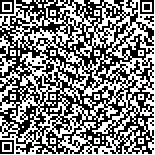| 摘要: |
| 使用美国海洋环境预报中心(NCEP)逐日的表面风场和热通量强迫的大洋环流模式(LICOM)研究了1998~1999 年负位相印度洋偶极子(IOD)事件期间赤道印度洋环流长波动力机制的年际变化。模式能够很好地模拟出高度计资料的海面高度异常。使用垂直模分解方法对模式输出进行赤道波分解, 结果表明: 西边界反射在负位相IOD 事件发生、发展和衰亡过程中起了重要作用。虽然西边界反射在正、负位相IOD 期间均起到了重要的负反馈作用, 但两者的来源机制却是不同的。在1998~1999 年负位相IOD 事件期间, 西边界处产生的两个上翻的开尔文波均来自赤道罗斯贝波在西边界处的反射。第一个上翻的开尔文波主要在西印度洋和中印度洋发生作用, 由于受到西风异常强迫的下沉的开尔文波的影响, 它并没有成功到达东印度洋, 但是却一定程度上削弱了中东印度洋的下沉异常; 而第二个上翻开尔文波成功到达东爪哇沿岸终止了那里的下沉异常, 最终终止了负位相IOD 事件。首次从赤道长波动力学角度解释了1998~1999 年负位相IOD 事件的结束机制, 有利于进一步了解IOD 对印度洋周边气候甚至太平洋的影响。 |
| 关键词: 开尔文波 罗斯贝波 西边界反射 海面高度异常 负位相 印度洋偶极子(IOD) |
| DOI: |
| 分类号: |
| 基金项目:国家自然科学基金青年科学基金项目(41206018); 全球变化研究国家重大科学研究计划(2012CB956000) |
|
| Long wave dynamics of sea level variations during the negative Indian Ocean dipole event during 1998—1999 |
|
|
| Abstract: |
| The interannual variation of long wave dynamics of the negative Indian Ocean Dipole (IOD) event of 1998—1999 are studied using Ocean General Circulation Model (LICOM) forced by daily surface winds and heat flux of National Centers for Environmental Prediction (NCEP), the simulation can reproduce the sea level anomalies of the altimetry data observations well. The equatorial Kelvin wave and Rossby wave decomposed from model output using vertical mode decomposition method show that western boundary reflection plays an important role in the evolution of negative IOD. Different from positive IOD events, the role of off-equatorial Rossby wave can be neglected and both two upwelling Kelvin waves are reflected from equatorial Rossby waves at the western boundary during negative IOD events. During 1998—1999 negative IOD events, the first upwelling Kelvin wave functions in the western and central Indian Ocean and was overwhelmed by westerlies anomalies forced downwelling Kelvin wave; and the second upwelling Kelvin wave terminates the downwelling anomalies off the Java coast and terminates the 1998—1999 negative IOD event eventually. The paper explains the termination mechanism of negative IOD events during 1998—1999 from the view of equatorial long wave dynamics at the first time, which laid down the foundation of understanding the influence of IOD on the surrounding climate even the Pacific Ocean. |
| Key words: Kelvin wave Rossby wave western boundary reflection sea level anomalies negative the Indian Ocean Dipole (IOD) |
